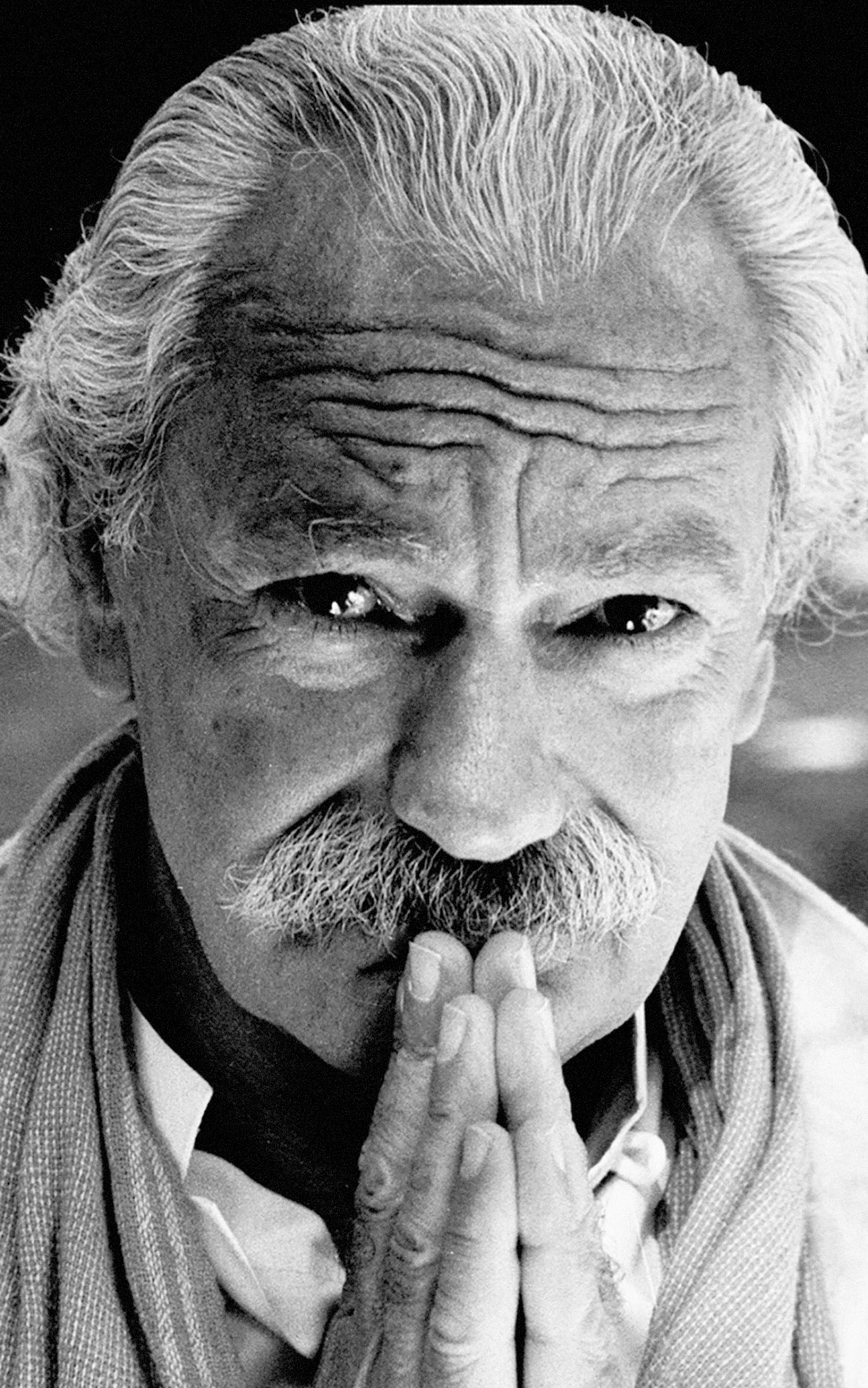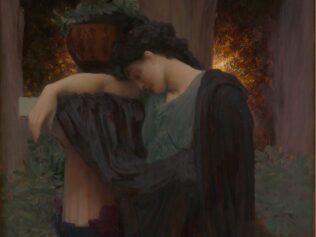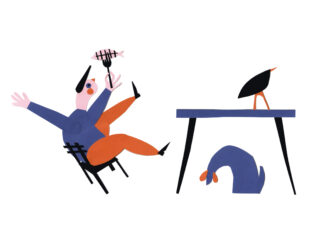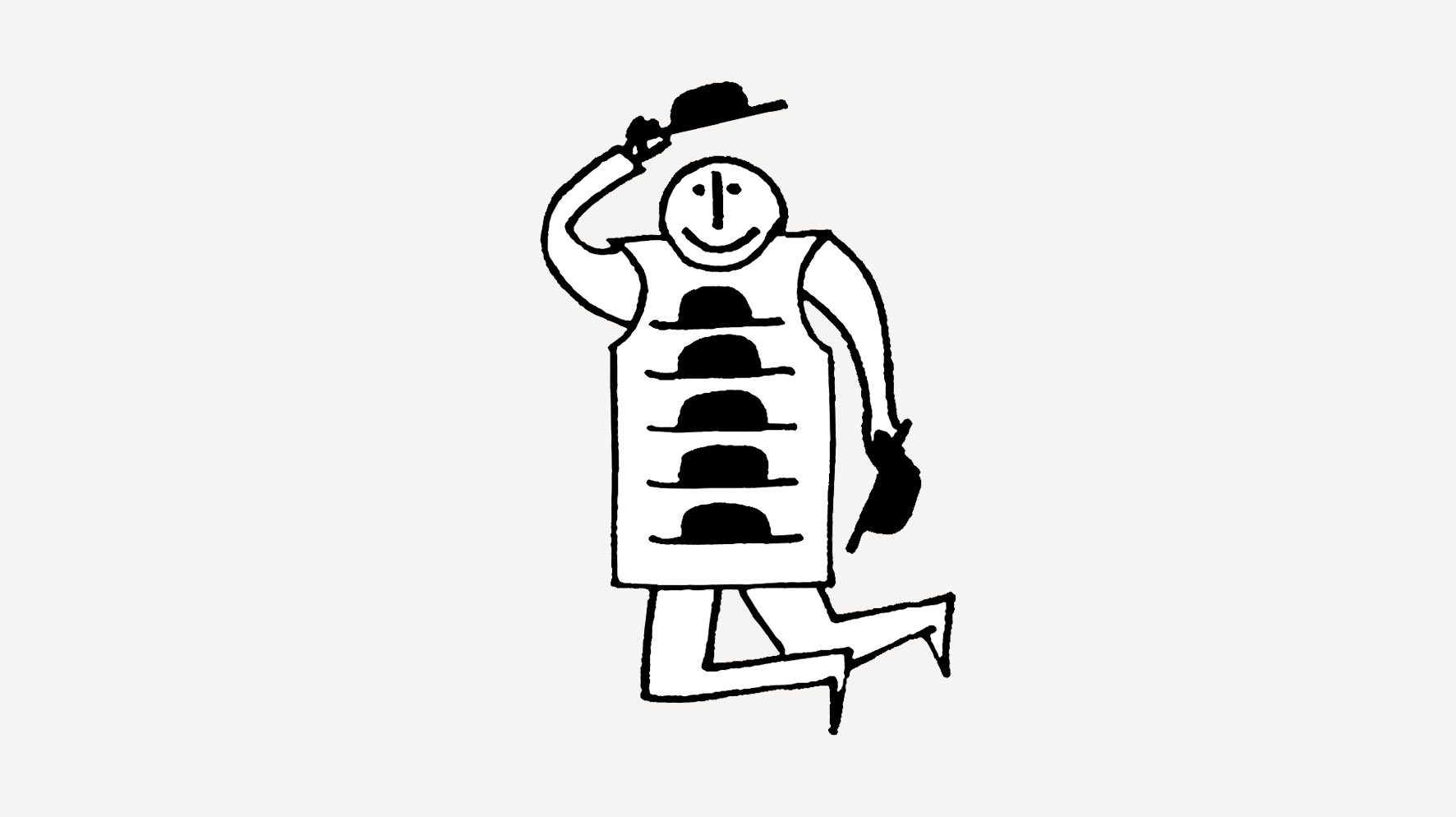
At the end, the fortunate can say: I lived my life to the full and exactly how I wanted. But Tiziano Terzani raised the bar – he showed us how to die in a beautiful and concise manner.
“The arrangements are as follows: when the time comes, you will contact the Green Cross. Discreetly, they will come by the house and do what needs to be done. As you have known for some time, I want to be cremated and I would like the casket to be as simple as possible, preferably made from wooden boards. In it, I will be taken to the chapel and from there – as quickly as possible, without prayers, singing, or speeches, but in my beloved silence – I will be taken to the crematorium, which I will leave as dust in a simple urn that can be passed on to the family. This is how I will return to the land of Orsigna. I want it to happen in this way. Do everything you can to ensure that. Thank you and have a good laugh. Hugs.”
Terzani wrote this letter to his loved ones – wife Angela, son Folco and daughter Saskia – a few days before they would need it, in his favourite purple ink, his handwriting already wobbly. Later, in a conversation with his daughter, he adjusted the instructions: “Choose a nice place […]. One day you will put there a beautiful stone with a hollow, so that the birds could come to drink water.”
The beginning is my end
He was glad that he would die in the Tuscan valley where as a five-year-old boy he had learned about the magic of life and nature. The village of Orsigna was his liberation – here, he could escape his overprotective and controlling mother. She wanted a daughter so badly that she dressed him in dresses. The valley gave him the first opportunity to be alone and feel freedom – he would satisfy this longing throughout his entire later life. In his final ruminations, he admitted that his existence – although in his writing, he ascribed it the dimension of a meaningful search – was, in essence, an escape.
In the 1920s, while on a field trip with the People’s University, his father Gerardo discovered Orsigna for the Terzani family. He later returned to the valley to ski, which – as a poor man – he could not afford. Together with friends they tore wooden planks from the fences, tied them to their feet with ropes, took sticks in their hands and… go!
Little Tiziano was brought there in 1943 as a poorly five-year-old, whom the paediatrician recommended plenty of fresh air. The later correspondent for Der Spiegel – author of moving dispatches about the Vietnam and Cambodian wars, political turmoil in India, China and Singapore; a tireless traveller and enthusiast of Asia, chronicler of its regime and capitalist changes, as well as one of the most famous authors of books on spiritual journeys – was a fragile child who for years grew up in the shadow of death. Following the end of World War II, the Orsigna Valley – inhabited by the poor living in stone houses and feeding on chestnuts, mushrooms, and corn cultivated in tiny fields – was for him a mysterious and inspiring land. The men from the village worked as woodcutters and shepherds, their wives were said to be witches, and the surrounding woods were said to be inhabited by werewolves. Each stone could speak – a carrier of legends about devils and Madonnas. In the village folk, Tiziano saw philosophers and poets, and they spoke in verse to one another. Although he only came to understand that when his life came full circle and after years of thorough instructions and spiritual exercises he could definitely say, “The beginning is my end, the end is my beginning”, the inhabitants of the valley remained his most important inspiration. He associated his stays in the valley with the original discovery of freedom and the wonders of nature.
With the first money earned as an adult, he bought land in the valley. His mother created a simple project of a house consisting of a bedroom, a living room and a children’s room. They brought stones for its construction from the river, on mules.
In 2006, Terzani was dying while looking at this valley. However, he did not stay in the house, but in a tiny, Tibetan-like gompa erected nearby, where he had the use of five square metres of space and a simple bed. In his last conversations with Folco, which his son later published as the book The End is My Beginning, Terzani likened his gompa to a tree house – a child’s dream of a solitary space among greenery. “If you look at this wonderful valley from our meadow, you will understand that it was my refuge. […] I like the idea that I will leave from here because I feel that the soul that I have lived is here. These are my Himalayas.”
He was ready. He went through, or rather sat through, the key stages of knowing, in a hut in the Himalayas. There – in cold and silence, staring at a candle flame – he meditated for months, exploring the truth confessed by Hindu ascetics that life and death are the same and all existence is one. The beginning of life is an invitation to death; it is unambiguous and simultaneous with the end. Because time is not – as Westerners tend to believe – a straight line on which progress and change are marked, but (according to Hinduism) a circle, a constantly rotating being, the simultaneity of everything. In his mountainous seclusion, deepened by months of rains and snowstorms cutting him off from the rest of the world, Terzani gradually disconnected subsequent elements linking him with the material, superficial dimension of life. As he wrote later, he became lighter and all the more felt his existence to be a part of the cosmic order; himself – a wave ready to melt in the ocean.
All in all, he spent several years in the Himalayas. It was the highest level of initiation, and the last episode of his most extensive journey that began in 1997.
I am nobody
When Terzani was diagnosed with cancer, he recounts how – to his own surprise – he didn’t despair or really care, as if the news was not really being delivered to him. He spent the next day as usual, on transfers to Orsigna. He even remembered to pick up the laundry. Upon arriving home, he asked Angela to join him for a walk in the woods, where he told her that he would try to get out of it. By then, they had been married for 40 years.
He was 59 years old. He saw his illness as an invitation to look carefully at himself and his life. And although he was just about to begin this testing pilgrimage, at its start he was filled with tranquillity. “What was my life like until this point? Amazing! An adventure after adventure, a great love, nothing to regret and nothing important left to be done.” Of course, to be able to say such a thing to oneself when facing a sinister diagnosis, one must first live consciously, extraordinarily, with curiosity, an open mind, and a courage to learn. The uniqueness of Terzani’s position was that he did just that. He accumulated the particular, let’s say, competences that allowed him to look death straight in the eye and experience different stages of the illness as new spaces on the map of his journeys. In fact, the way he went about the treatment and experience of cancer was no different than how he approached other topics he explored in his work as a journalist.
He believed that he owed his interesting experiences and observations to basic features of character: curiosity and sensitivity, rather than an exceptional intelligence or boldness (he considered himself intellectually mediocre). Perhaps the reason his books are so popular is because he was a regular person who decided to take on highly unusual tasks. His writing was simple, perhaps a little too drawn out, and he was not afraid or ashamed of often-banal reflections. In the banal, he was able to see clear truths – signposts allowing him to maintain clarity of vision in the era of constant subjectivation. He was a boy from Florence who loved to explore the world, but hated tourism; a young man who believed in the healing power of the revolution, whose ideals shattered on the frontlines of brutal wars; a self-centred journalist, passionate about flirting with death because that’s where the adventure was to be found. He never felt special, but he noticed the uncommon and the bizarre around him. This is why in the end, among other things, he was able to gently admit: “I am nobody.” And he called himself nameless. He attempted to disappear, piece by piece.
Corridor to the entrails
However, before Terzani understood the meaning of nothingness, he looked into every corner of the phenomenon of illness, and learned about and tried many treatments. The first was traditional medicine. Terzani combined a serious interest in Asian spirituality and beliefs (an intense account of which was his A Fortune-Teller Told Me: Earth-bound Travels in the Far East, a peregrination through the offices of astrologers, fortune-tellers, magicians, and all sorts of conjurers of the future) with the ultra-pragmatic approach of a mind educated at European and American universities and a spirit embedded in the traditions of the Old Continent. His decision was rational – he began treatment at a prestigious New York medical centre. His plan to ‘fight’ cancer (he did not like this term, it assumed opposing the illness, which he considered an enriching experience) included chemotherapy, surgery, and radiation therapy. He would undergo them patiently, humbly, retaining his conscious and critical sense of self-observation. During the first stages of treatment, he contemplated his relationship with the body – an attachment to the material dimension of existence. He did not sublimate the changes he was experiencing, but was able to write with irony about the guy in the mirror whose silhouette lost all proportion and with whom he felt no connection whatsoever. For most of his life he was a very handsome man, in middle age he wore long, white hair, and here, suddenly, a reflection of a bald, potbellied man was glaring at him.
He immediately chose seclusion. He rented a small apartment in Manhattan; quit his job and stopped taking calls. He reduced contact with his own family.
Angela – and it is difficult not to observe that his wife’s name wonderfully reflects her infinite patience and protectiveness of Tiziano – allowed him to experience the illness in his own way, just as she had always tolerated his trips, including those to war zones or remote areas, in the past. In all his writing, his wife appears as his rock; in several books Terzani repeats that his life as he had known it would not have been possible without her. No less important – in the context of Western culture’s present disagreement with the processes of weakening, aging, and dying; questions he also thought about – was Angela’s consent and reconciliation with her husband’s final choices.
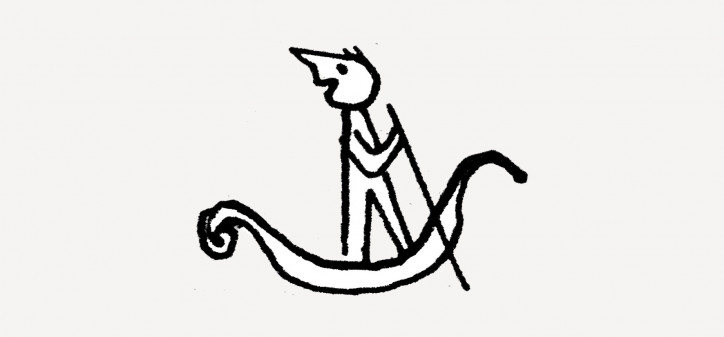
Once the main stage of his New York treatment was complete and the doctors encouraged him to “return to normal life”, Terzani performed a volte. He had no intention to return to his previous life. He had already used the illness for self-development; above all, it allowed him to realize that he was no longer interested in the fast pace and pursuit that characterized his work as a journalist. He felt free from the meaningless, earthly race.
In three months, he was to appear for a check-up. So, he set off upon a journey. He decided to learn the traditional methods of treatment used in the cultures of his beloved Asia. Instinctively, he saw in the subject of health a way in that enabled him to enter the entrails of the continent, which he had considered for years to be spiritually the richest and the least penetrated by the demons of greed and the empire of globalization. While working, he spent 30 years in different parts of Asia, he had a home in India – so why not trust the local ideas of health and wellbeing? He set off where dying is seen as a natural element of existence, where life and death co-inhabit the space of everyday life and myths, where the end seems to be the most primal experience.
Illness as a non-physical phenomenon
It can be said without exaggeration that over the next few years he tried everything. He stayed at an Ayurveda centre in the south of India; in Thailand, he fasted to cleanse the large intestine; in the Philippines, he underwent healing rituals in the Asian Pyramid; he met with a Chinese billionaire and philanthropist working on a medicinal mushroom extract; he performed ancient Chinese exercises in accumulating cosmic energy; in Boston, he tried marine medicines; and in California, the power of group support for cancer patients. For months, he studied Sanskrit and old Hindu texts to learn the nature of his ‘self’, and also tried homeopathy. He also did many, many other things, and found himself enjoying the no longer journalistic, but personal task of learning. He described all the treatment methods in One More Ride on the Merry-Go-Round and in doing this, he kept a balance between a respectful approach and distance and wit. He was curious, but not gullible. He was ready to try ‘the new’ with openness, but he did not turn off his internal barometer of truthfulness and common sense. He tasted adventure, but did not lose himself in it. He spared no effort or insight. He examined and took a pebble from each experiment. One of the most important teachings he learned in contact with the followers of various therapies was that healing is a process that takes place within the patient and is primarily spiritual. The disease – as Terzani learned – is a manifestation of tensions, incompatibilities and negative circumstances. In a word: the effect or symptom of some intangible process taking place within a person or in the pairing of forces greater than them.
In this sense, treatment is only a supportive process – the fate of patients depends on the patients themselves. We recover, and therapies can only support us – said all those who provided herbs, infusions, recommended exercises or appropriate breathing methods to the sufferers. They were all aware that they were only helping – either the human spirit or the immune system – and that they were dealing with a mystery.
Terzani contemplated illness as a non-physical phenomenon. He was also convinced that his troubles had begun in Japan, one of the last Asian countries to which he decided to travel in his long career. He felt unhappy and enslaved there. He saw the rigorous Japanese society as a binding system that prevented free and honest existence. “My depression began there,” he wrote. It seems that visiting this country turned out to be the end of his admiration for the East. As a culture transformed by the experience of future shock, technological development and commercialization, he considered it somewhat dead.
In fact, Terzani’s entire professional life was a testimony to the extermination of the great diversity and spiritual complexity of Asians. As a representative of the world of materialism and consumption, he observed and documented – with eternal pain – the ravaging of the East by market mechanisms. Wherever he went, he sought to connect with the superior, more meaningful dimensions of existence; he grabbed the last remaining threads, fading tropes. In Vietnam, he witnessed the fall of communist ideals of justice, and in Cambodia – a terrible slaughter of a people and their culture. He sought consolation in reflecting on the broader perspective and historical processes. To resist the discouragement and despair brought on by the fall of the ideals of social revolutions with which he grew up after the war, he turned to the past and sought references to great, universal processes. In some important dimension, he was prepared to observe his own, individual death, because he had already looked at the demise of entire value systems, the lost connections with ancestors, the forgetting of rituals.
This cloud is me
Finally, he grew tired of researching new methods and ideas for treatment. He exhausted this dimension of his explorations, but that only meant that he was ready to go further. As a result of meetings and conversations with Hindu swami – or spiritual masters – he went to the Himalayas to go through the key stage of preparations for death in solitude. Of all the philosophical systems and beliefs he studied, Hinduism had the most to offer. In Spartan conditions, alone, he went ahead and worked on detaching himself from the material world, the illusory shell of existence, and strengthening his bond with the cosmic order. He began recognizing himself as a part of nature. He got used to the thought that in itself, his existence has no meaning whatsoever. It is not separate, it belongs to the greater energy and spirit, and so his death does not equal a loss.
Death is also not the end, as understood in the West. Terzani recalled the story of an old man who, when asked what his life was, drew a circle in response. The Italian traveller wanted to move closer towards this ideal, but had to recognize his limitations. Even in the Himalayas, where he would spend entire days looking at the clouds in the sky and merge with them, in order to abandon his earthly form and attachment to ‘this place’, he was aware that he remained European. He felt that he did not want to break ties with his family and wanted to end his life at home.
Following five years of spiritual practice, he calmly heard the sentence delivered by a surly New York specialist giving him no more than six months to live. However, Terzani lived much longer – perhaps because he did not undergo the proposed treatment. He respectfully accepted the surgeon’s decision, who after opening his body on the operating table decided to withdraw from the procedure. Terzani thanked him for his restraint. Once again, he travelled to the Himalayas, especially since it was difficult for him to adjust to the mundane Italian life, but soon returned to Orsigna for good. He was so used to being alone that he ordered the construction of a small gompa where he could meditate, in silence and solitude, whenever he needed it.
However, he did not become the elderly man who answered questions by drawing a circle. In some part he remained a talkative Italian. In the same way he wrote rich, not-free-from repetition books, he wanted to tell the most important stories before leaving. He called books his friends, he thought that it was best to travel in their company and that it was worth traveling with those who had done it before and could share their wisdom with us. Something in the shape of a journal of his last journey, or maybe just the sum of Terzani’s wisdom, is the posthumously published collection of conversations with Folco.
It’s the ultimate blessing: to be able to talk honestly with loved ones to the last moment. For a writer, it is also a unique privilege to know that their most important story has been passed down to the last word.
He laughed straight in his face
Tiziano Terzani remains – alongside Oriana Fallaci – Italy’s most famous and most widely-read journalist and non-fiction writer, and is certainly the most beloved. His books are journals of intimate encounters with the complexity of the world, they have been translated into several languages and read by subsequent generations of people traveling to Asia. Millions of people already know them.
Before he became ill, Terzani had two close encounters with death. He broke free from both. First, a fortune-teller told him that in 1993 he would die in a plane crash. At the time, Terzani was the star of Der Spiegel – its Far East correspondent – and he was constantly on the move. However, he decided to turn this sudden limitation into an adventure. He informed the editor-in-chief that over the next 12 months he would travel by boat, train, bus or rickshaw, whatever would be needed, but he would not fly. His superior saw this as a chance for a series of unique reports. That was indeed the outcome, but on the way Terzani visited every important fortune-teller and horoscope expert, from Malaysia to Japan. These meetings resulted in the publication of A Fortune-Teller Told Me: Earth-bound Travels in the Far East. Most importantly, he did not get into the UN media helicopter that crashed in Cambodia on 20th March 1993. A colleague took his place on board – he was injured, but survived.
Earlier, when in 1975, Phnom Penh fell and the city was taken over by the Khmer Rouge, journalistic fever did not allow him to stay on the border with Vietnam and wait for developments. He made his way to the city against the tide, wading through crowds of people fleeing in panic, carried in his inexplicable conviction that he would be all right. Finally, he fell into the hands of the Khmer Rouge, and when they thought he was an American journalist, he had every reason to say goodbye to life. Yes, he had the excruciating thought that one of his colleagues would have to notify Angela. And then he laughed. He laughed at the astonished soldier in the face and pulled an Italian passport out of his pocket. He said in Chinese that he was Italian, not American. And then he lied that he was going to describe the triumph of the Khmer army. They welcomed him in the new country and sent him to the Vietnamese border.
That experience stayed with him forever. He had nightmares, he didn’t like to go back to a Cambodia that was – as he wrote – drenched in death. But from then on, he knew that courage does not equal the absence of fear, but the overcoming of it.
All quotes are from Tizian Terzani’s books:
One More Ride on the Merry-Go-Round (Un altro giro di giostra, 2016)
The End Is My Beginning (La fine è il mio inizio, 2006)
I also used the book:
A Fortune-Teller Told Me: Earth-bound Travels in the Far East (Un indovino mi disse, 1997)
Translated from the Polish by Joanna Figiel


